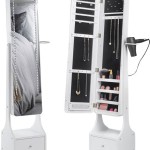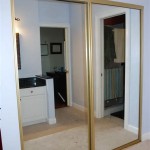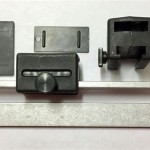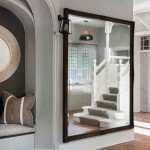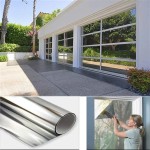Bathroom Sink Mirror Height: A Comprehensive Guide
Selecting the appropriate bathroom sink mirror height is crucial for both functionality and aesthetics. This seemingly simple decision can significantly impact the usability of the bathroom, especially for households with members of varying heights. Understanding the factors involved in determining the optimal mirror height can transform a frustrating morning routine into a smooth and efficient one.
The standard rule of thumb for bathroom mirror height placement suggests the bottom edge of the mirror should be 5-10 inches above the backsplash or countertop. This guideline provides a reasonable starting point, but it's essential to consider individual needs and the overall bathroom design. A fixed standard doesn't account for individual heights, vanity heights, or the presence of lighting fixtures above the mirror.
Vanity height plays a critical role in determining the ideal mirror placement. A lower vanity naturally requires a lower mirror placement to maintain proper proportions and usability. Conversely, a higher vanity necessitates a higher mirror placement. The goal is to ensure users can comfortably see their reflection without excessive bending or straining.
Individual user height is another significant factor. In households with multiple users, finding a compromise that accommodates everyone is key. While a precise calculation for each individual might not be practical, considering the average height within the household can help determine a suitable mirror height. In cases where significant height differences exist, adjustable mirrors offer a flexible solution, allowing each user to personalize the mirror position.
Ceiling height also influences the overall visual balance of the bathroom and can indirectly affect mirror placement. In bathrooms with lower ceilings, a smaller mirror or a mirror positioned slightly lower can help create an illusion of spaciousness. In contrast, bathrooms with higher ceilings offer more flexibility in mirror size and placement, allowing for larger or taller mirrors.
Lighting fixtures installed above the mirror can impact the usable mirror space. Sconces or pendant lights positioned too low can obstruct the view and necessitate a higher mirror placement. Carefully consider the size and placement of lighting fixtures to ensure they complement the mirror and don't interfere with its functionality.
Beyond these practical considerations, the mirror's size and shape also contribute to the overall aesthetic. A larger mirror can make a small bathroom appear larger, while a smaller, more decorative mirror can serve as a focal point. The shape of the mirror should complement the style of the vanity and the overall bathroom design.
The distance between the mirror and the user also affects usability. While there's no strict rule for this distance, generally, 12-18 inches provides comfortable viewing space. This distance allows users to perform tasks like shaving or applying makeup without feeling cramped.
When installing a medicine cabinet with a mirrored front, the same principles apply. Consider the cabinet's height in relation to the vanity and the users' heights. Ensure the shelves are accessible and the mirrored surface provides adequate viewing space.
In addition to the above factors, local building codes may specify requirements for mirror placement, especially in commercial settings. It's always advisable to check local regulations before undertaking any bathroom renovations.
Professional installation can ensure the mirror is securely mounted and positioned correctly. While DIY installation is possible, professional installers have the experience and tools to handle various wall types and potential complications. This is particularly important for larger or heavier mirrors.
Proper planning is essential for successful bathroom design. Taking the time to consider the factors discussed above, from user height and vanity height to ceiling height and lighting fixtures, can help create a functional and aesthetically pleasing bathroom. Choosing the correct bathroom sink mirror height is a detail that significantly enhances the overall usability and enjoyment of the space.
Finally, considering future needs can contribute to a more adaptable bathroom design. If potential changes in household members are anticipated, opting for adjustable mirrors or planning for future modifications can save time and expense in the long run. A well-planned bathroom considers both current and future requirements, ensuring its functionality and appeal for years to come.

Standard Bathroom Vanity Mirror Height Google Search Sizes Measurements Plan

What Is The Standard Height Of A Bathroom Vanity 2024 Guide

How High Should You Hang The Mirror In A Bathroom With Photos Design Morsels

Standard Height For Bathroom Mirror Dimensions Vanity Sizes Vessel Sink

Bathroom Mirror Size Calculator

Bathroom Vanities Buy Vanity Furniture Cabinets Rgm Distribution

Home Interior Design Tips By Miami Firm Bathroom Measurements

Standard Height Of Bathroom Fittings Engineering Discoveries

Apmir 36 In W X H Square Tempered Glass And Aluminum Alloy Framed Wall Bathroom Vanity Mirror Matte Black B9090 The Home Depot

What Is The Standard Bathroom Vanity Height Size Guide


